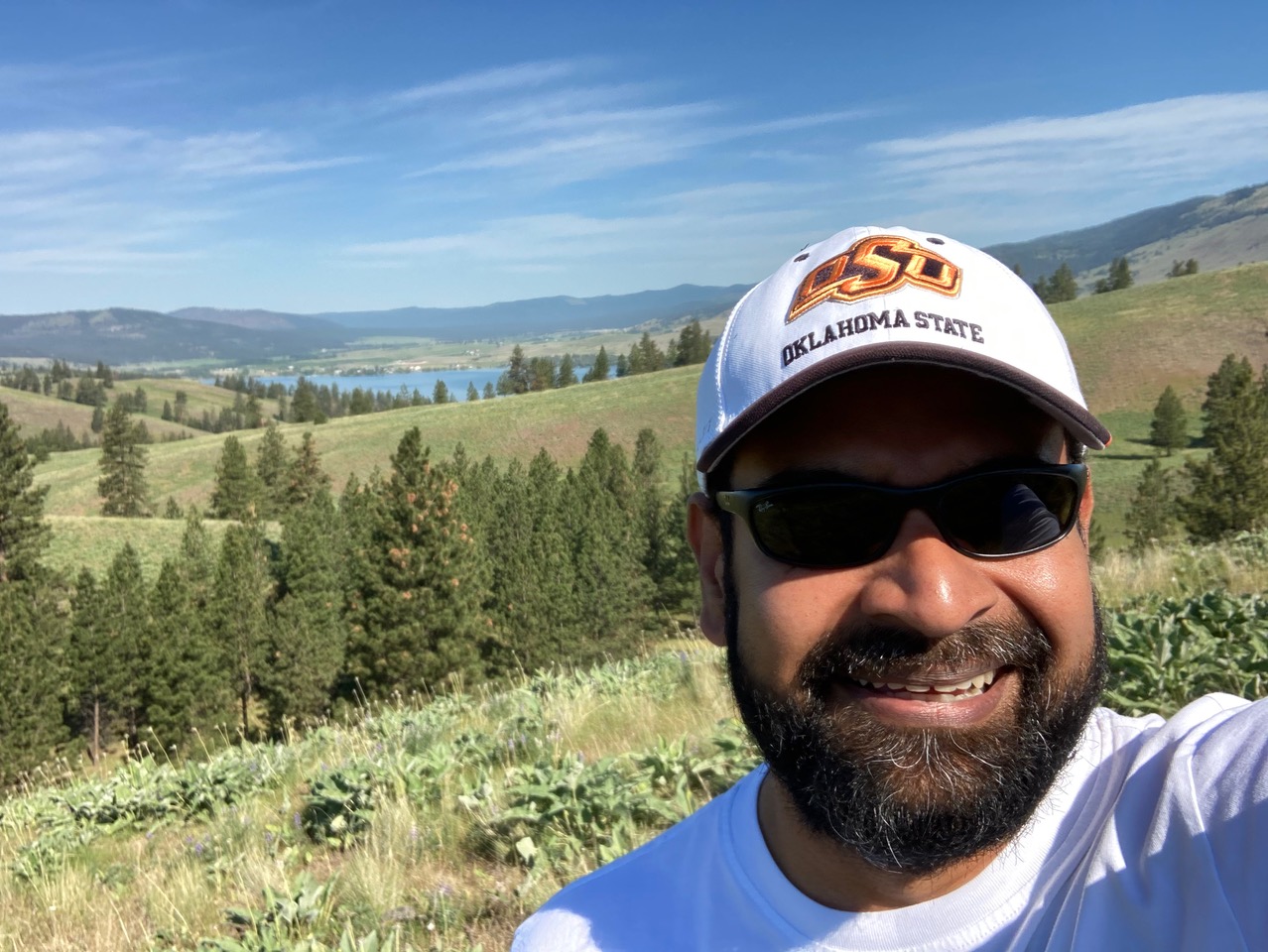Dr. Puni Jeyasingh
Department of Integrative Biology
Puni Jeyasingh is a professor in the Department of Integrative Biology. His group strives to gain a predictive understanding of a key biological process - the production of biomass.
Nature is complex. Science is about understanding it in a logically consistent and empirically verifiable manner. Accurate prediction is the highest form of understanding. Prediction catalyzes further discovery and innovation, benefiting humanity. Simply put, if you can predict one variable with information on another variable with reasonable certainty, you can claim to have a predictive understanding of the relationship between these two variables. What these variables are is up to the individual and his or her interests.
Our group is interested in predicting mass gained over time in biological systems. This variable is referred to as growth or productivity, depending on who you talk to (e.g., cell biologist, ecosystem ecologist). Growth is quite variable among cells, organs, and individuals. And ecosystems vary markedly in productivity. We do not have general models that predict growth and productivity with much certainty at any level of organization, particularly in natural conditions (i.e. outside the laboratory). A predictive understanding will have immediate applications, ranging from food security (e.g., enhancing nutrient use efficiency of crops, which is below 50%) to environmental management (e.g., mitigating harmful algal blooms, which are increasing in frequency and magnitude).
To understand change in biomass, it helps to know what makes up biomass. Thanks to generations of biochemists, we know that proteins make up the vast majority of metabolically active biomass, followed by nucleic acids, lipids, and carbohydrates. Thanks to generations of chemists, this information allows us to predict (and empirically verify) the elemental basis of biomass. About 20 elements (of the 118 in the Periodic Table) make up biomass. Of these, carbon, hydrogen, oxygen, nitrogen, phosphorus, and sulfur are used to build biochemicals and make up the vast majority of biomass. Major ions (e.g., sodium, magnesium, calcium, potassium) are the next abundant elements in biomass and are used to maintain a safe electrochemical environment for biochemistry to happen. Finally, metals (e.g., manganese, iron, copper, zinc) serve as centers where biochemicals are cut up for essential functions (e.g., energy metabolism).
Sounds simple enough. So why can’t we reliably predict growth/productivity using elemental information? Biologists have been studying elements in isolation, not as a complex system in its entirety. Genomic era observations clearly show that growth/production is rarely limited by a single element (referred to as the Law of Minimum) at the systems level. Moreover, we know that the availability of most elements is spatiotemporally variable (e.g., within a cell to among continents; within a lifespan of a protein to the lifespan of a lake). We need a better theoretical handle on the dynamics of this network of elements as biosystems gain mass. Consequently, along with growth/productivity we measure (or estimate) the uptake, storage, and excretion of as many of the elements in a system as possible. We primarily use freshwater organisms and ecosystems as testbeds, although we continue to work collaboratively with purposeful disregard for disciplinary and taxonomic boundaries.
We believe science in the 21st century should be more accessible and inclusive. The scientific method is elegantly simple. Proficiency in wielding this method is empowering. It allows an individual to make key decisions based on careful observations of the real world (i.e. data). To this end, Puni teaches two general education courses (with N designation) for non-science majors: (i) Biology for the Informed Citizen (BIOL 2003, offered every Fall semester), and (ii) Freshwater Issues (BIOL 3053, offered Spring of even years). There are no prerequisites or textbooks for either course.

